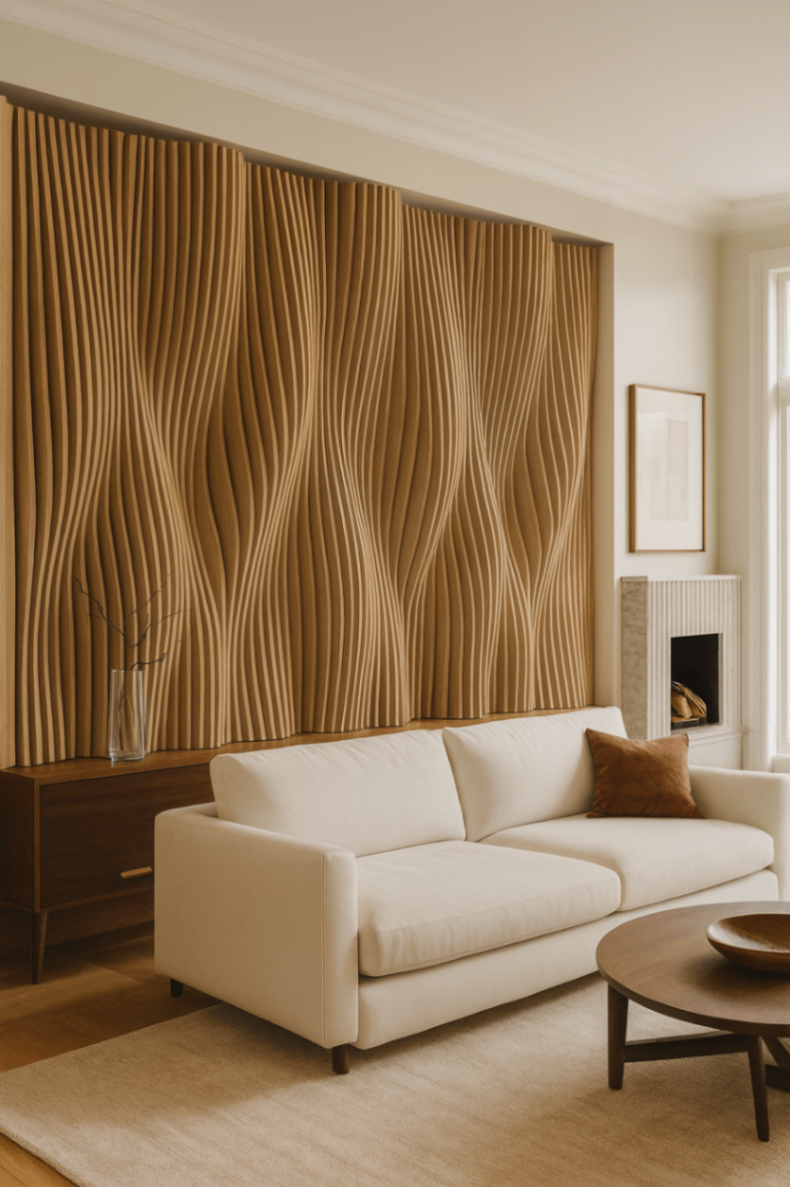The Future of Furniture: Exploring CNC Parametric Design
- Admin

- Oct 23
- 3 min read
Updated: 6 days ago
Imagine a world where furniture shapes itself based on algorithms. Curves flow like nature intended, and custom designs become affordable for everyone. This isn't science fiction—it's the reality of CNC parametric furniture. This groundbreaking approach is transforming how we create, design, and manufacture furniture pieces.
In this comprehensive guide, we'll explore how parametric design is revolutionizing the furniture industry, the technology behind it, and why designers worldwide are embracing this innovative approach.
What is Parametric Furniture Design?
At its core, parametric furniture refers to furniture designed using algorithms and computational methods. Here, parameters—dimensions, angles, curves, and proportions—can be adjusted and modified without starting from scratch. Unlike traditional furniture design, where changes require complete redesigns, parametric approaches allow designers to explore countless variations by simply adjusting input values.
The magic happens through specialized software that translates these parameters into precise digital models. These models then become production-ready files that can be sent directly to manufacturing equipment. Designers can manipulate variables like material thickness, component spacing, and overall dimensions, watching the furniture evolve in real-time. This flexibility opens doors to shapes and forms that would be impossible or impractical with conventional design methods.
The Technology Behind the Scenes
The journey from concept to finished piece involves sophisticated CAD software, algorithmic computing, and advanced manufacturing. Design platforms like Fusion support parametric modeling to develop flexible designs. These designs incorporate parameters and constraints, allowing furniture designers to explore various dimensions and proportions without restarting the design process. Integrated CAM tools create toolpaths for CNC machines directly from 3D models.
A CNC router serves as the heart of the manufacturing process. These machines cut precision pieces from flat sheets of material, which are then sanded and finished before being assembled. Designs are first created in CAD software as solid pieces before being 'sliced' into vertical sections that can be laid flat for cutting. This slicing technique allows complex three-dimensional forms to be manufactured from flat sheet materials with minimal waste.
The workflow typically follows three main stages:
Model Creation: The designer creates a three-dimensional model according to specifications and develops a cutting algorithm based on material thickness.
File Generation: Drawing files are generated in formats compatible with manufacturing equipment.
CNC Processing: These drawing files are imported into specialized software to generate machine code. Finally, the CNC router processes the parts according to specifications, and components are assembled to create the finished furniture piece.
Why Designers are Embracing This Approach
The benefits of parametric furniture extend far beyond aesthetic innovation. Manufacturing becomes faster and more efficient, with the ability to create prototypes and make adjustments on the fly. Material waste decreases dramatically because algorithmic calculations optimize cutting patterns automatically. Customization becomes accessible—designers can modify designs for specific client needs without lengthy redesign cycles.
Sustainability represents another compelling advantage. Computational techniques enable designers to simulate and optimize environmental impact before production. They can choose materials that are aesthetically pleasing while being environmentally sustainable, using them in ways that minimize waste and energy consumption.
Real-World Examples of Parametric Innovation
Renowned architects and designers have demonstrated the remarkable potential of this approach. Zaha Hadid's iconic furniture collection showcased fluid, organic forms that maintained structural integrity while appearing lightweight. Joris Laarman's Dragon Bench, created using 3D printing technology, exemplifies how parametric methods enable complex sculptural forms. The Weaved Bench exemplifies how traditional materials like Baltic birch plywood can be transformed into striking organic designs through parametric computation.
Who Benefits from CNC Parametric Furniture?
This technology serves designers, architects, manufacturers, and even individual consumers. Digital fabrication removes barriers to creativity, enabling studios of any size to produce complex, custom pieces. Some innovative platforms now allow everyday people to customize parametric furniture designs without professional training, democratizing the design process entirely.
The Future is Now
CNC parametric furniture represents more than a trendy design technique—it's a fundamental shift in how we approach furniture manufacturing. By combining algorithmic thinking with advanced fabrication, designers create pieces that are simultaneously more sustainable, more innovative, and more personally meaningful than traditional alternatives.
Whether you're a designer seeking to expand your creative possibilities or a consumer wanting truly custom furniture, parametric design offers exciting opportunities. As technology advances and becomes more accessible, expect to see increasingly imaginative furniture that challenges our expectations of what's possible in design and manufacturing.
The future of furniture is parametric, algorithmic, and undeniably beautiful. Embrace this evolution and discover how it can transform your space and experience.




Comments